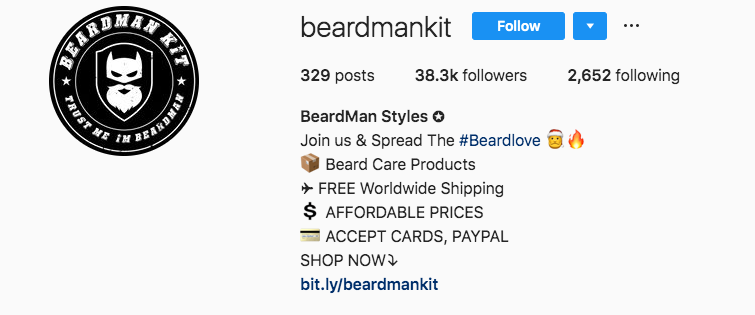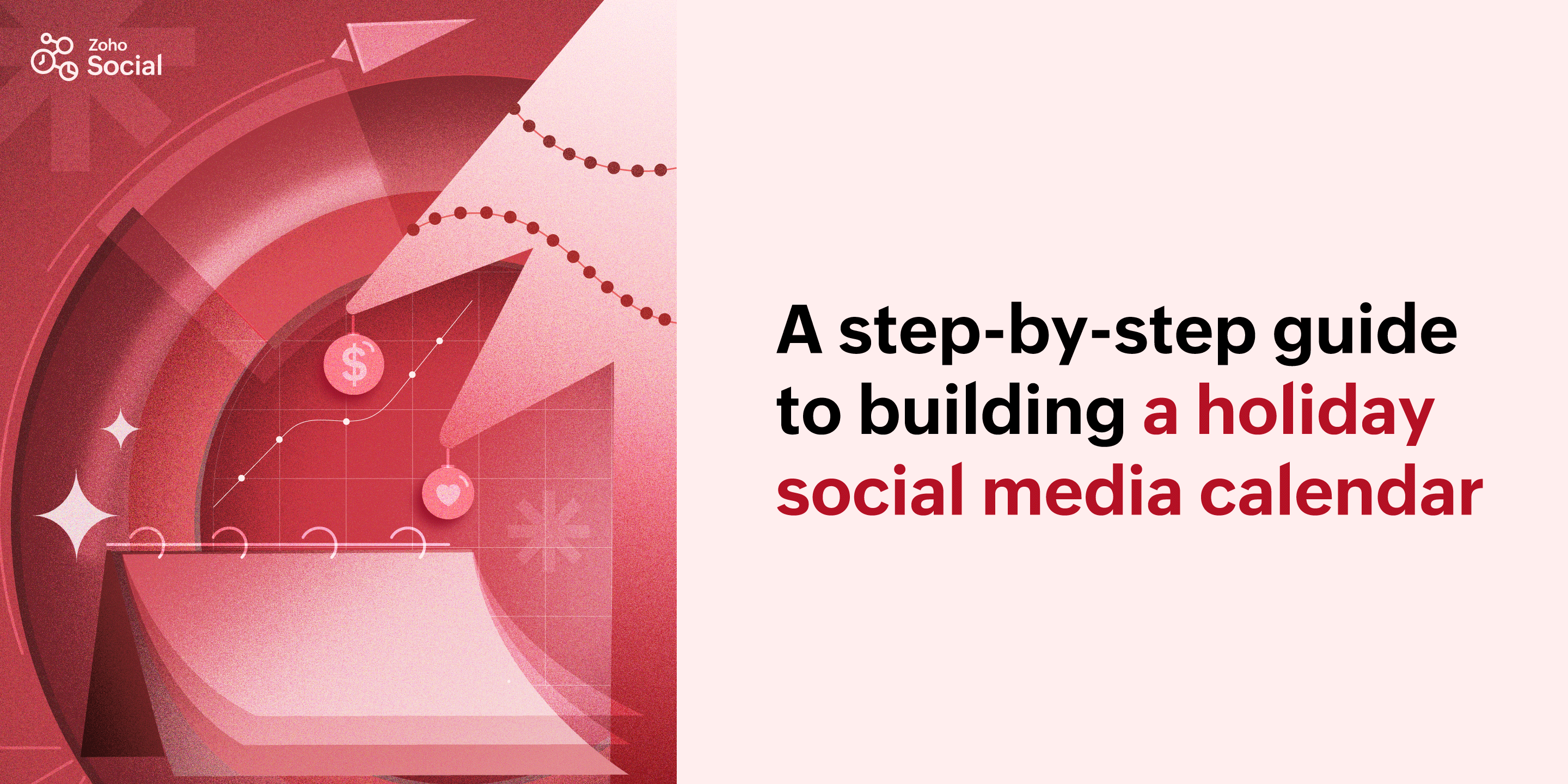- HOME
- Brand Stories
- 13 strategies for writing a great social media bio for businesses
13 strategies for writing a great social media bio for businesses
- Last Updated : July 10, 2025
- 10.5K Views
- 11 Min Read

Did you know about 3.26 billion people use social media on their mobile phones? Yes, that’s almost half the population on planet earth who log into the social internet. And if that’s no shocker, then here’s one. If we count annual mobile-phone usage and the corresponding increase in usage of social media on phones, we can safely estimate this – there are going to be more people in the world who can like & share than there are going to be people who own a toothbrush.
Yeap, you read that right. Now you know why we put a lot of weight into a brand’s social media presence—it matters. Not only is social media penetration globally growing at about 8-10% in the past few years, but its impact on our choices are also becoming more quantifiable—especially purchase decisions.
This influence stretches to even the most granular aspects of a social media profile – like your social media bio. But, what is the big deal about a bio?
Think of it as your brand’s elevator pitch to the world! While your marketing strategy can afford to be focused to serve a specific target audience, your social media bio needs to be a little more than that. Because this is where your business can make a good first impression online, to multiple audiences on a broader stage—regardless of whether it’s going to be consumers, vendors, or other businesses.
And what’s the first step to creating an impression with your social media profile or page? That’s right—a kickass bio. But before we showcase the kinds of strategies you can use to construct your brand’s social media bios, here’s a quick 3-point summary as to why this matters.
Benefits of a well-rounded social media bio
- More brands on social media becoming increasingly personalized, and your bio goes a long way in helping form an initial impression to consumers who are now pickier than ever before.
- A good bio helps articulate what your business does in just a couple of seconds of skimming through, catering to even a casual browser.
- It also helps generate more search hits and increases visibility for your business via #hashtags & keywords that you use.
13 best strategies for writing a good social media bio
While there are various best practices out there for every individual social network, we wanted to give you a run-down of the best strategies to fill in a bio with limited character space – because this is where you’re being judged against your competitors. Some specific networks bring out the creative marketing touch from many brands simply due to their space constraints – be it 150-character limit Instagram bio, or the 160-character limit Twitter bio.
Unlike networks like Facebook or LinkedIn that lets you import more content from your webpage or otherwise, these networks expect you to have short, snappy pitches for your brand. And this is where you can truly shine, using a smartly put together social media bio. So without further ado, here’s our list:
1. Keep your brand’s tone, human – Talk about your business like a person would, at the end of the day it’s a person that’s working behind the scenes for the brand handle.

Dollar Shave Club does a neat job of this. Not only does its Twitter profile feature a banner image with diverse faces giving it a human touch, but their bio also keeps the tone human and approachable.
2. Clarify brand purpose – Most people don’t just want to know who you are – they also want to know what you can do for them. Spelling it out in the bio can help.

Marie Claire is a really popular globally known magazine, with women as its target audience. But instead of just calling themselves as another “women’s mag“, their Twitter bio asserts itself as a magazine brand with a dominion on all things female. Even if someone didn’t know much about the brand, their succinct and punchy bio packs enough intrigue to make one click and see what Marie Claire has to offer.
3. Use emojis – if your business does a lot – be it having a wide catalog of products or services, sometimes even across sectors, it helps to visually represent them using emojis in the bio. It helps to add a splash of color and expression, and also cover a lot in concise space.

Fashion brand ASOS has everything from clothing, to makeup and accessories on offer—and for anyone who stumbles into their profile on Instagram, it only takes a few seconds to learn that. Using just emojis they’ve linked to profiles for each of these product lines they own, their support channel, as well as their website. If not for the emoji, that could’ve been a very cluttered looking bio.
4. A well-formatted bio – Avoid long-winded vague, incoherent bios and stick to articulation over style, as a rule of thumb. And even if you want to keep your bio’s style a little conventional and simple – that’s okay. You can do that while ensuring you ascribe to all the best practices behind writing a solid social media bio – that it’s clear, concise brand information, written for the right target audience alongside all the key business deets. This also includes the formatting – how your logo, text, emoji, and links flow.

While nothing particularly jumps out from this short-and-sweet bio of the Cheesecake Factory, it’s a fitting example for a brand that ticks all the boxes for a well-structured and well-formatted bio, and that gets it into our list.
5. Keywords – Incorporate keywords that are most used by your industry peers, competitors and search terms used by your target audience – into your bio. This helps in not only discoverability within the network, but also in aiding the audience to map their needs (searches) to your brand—thereby upping brand recognition.

Here’s an example of a brand that used only a string of keywords to fill up their bio—and oddly enough, it doesn’t feel lacking. Old Spice‘s Instagram profile has managed to capture the real essence of what the brand does in just about 5 words—it has communicated its brand image, what the company does, what its social media content circles around, and what’s in it for the internet audience to follow them. Brevity is the soul of wit, and we think they’ve knocked this one out of the park with such a clear picture of their brand.
6. Hashtags – If your brand is part of a niche industry, use the relevant hashtags in your bio while spelling out what you do. This helps in two ways – attracting the right audience and making yourself more discoverable on search results.

Beard man kit, a brand that sells men’s grooming products uses a single hashtag #Beardlove on its profile. Not only does that cover most of what the brand does, but it also happens to be a hashtag that clocks in thousands of posts which makes this profile much more discoverable for its target audience, even if they’re not posting every day.
7. Branded hashtags – Since hashtags are clickable on most network bios, people can see more of what you do, if your hashtag is clickable and is specific to your brand and its campaigns.

Apple is notorious for its sparse social media activities. While you won’t have much luck seeing much on any of its social channels, its official Instagram profile begs to differ. is a valuable marketing lesson for many. Here is a perfect mix of UGC (user-generated-content) meets brand campaign done well.

The brand uses photographs by Instagrammers tagged under the #ShotoniPhone hashtag and makes these photos the mainstay of its Instagram profile. This is showcased prominently on its bio strengthening its brand message. As a Techcrunch article put it, without even showing its main product, the iPhone, “Apple is promoting the iPhone camera as the perfect tool if you want to up your game on Instagram.”

Google‘s #teampixel uses the same concept of an user-generated content campaign. It’s the most prominent brand message on its Instagram bio and its feed is no less than Apple – featuring handpicked photos from across the network carrying the #teampixel hashtag.
8. Add most important CTAs – Believe it or not, 25.6% of all website referrals in 2018 came from social media pages and profiles. So if you have a compelling webpage or campaign page that pitches your brand well, it helps to add it prominently on your bio and get more traffic to it.

Here’s the official Instagram account of Pottery Barn. There’s nothing too fancy going on here, but it serves the purpose that the Instagram feed aims to do: get people to shop from their online store. With the key CTA on the bio being not their website or marketing page, but their online store link instead. This coaxes even the social media window-shoppers to check out their collection – thereby nudging them to engage with the brand and pin them down as potential customers.
9. Use it as a promotional space – If your brand has updates and announcements that are integral to its business strategy, it’s not just your feed but also your bio that can come in handy to market this. You can use changeable CTAs as and when you want to get traffic for a news/viral blog or announcement post.

Take a look at how easily Diet Coke was able to announce new flavor additions to its existing drink lineup.
10. Grab attention with bio – Be it a quirky description, a wordplay or a quip – here’s the space to play with your audience, especially if your brand identity is easy for them to figure out and there’s not much explaining you need to do.

While several brands have emerged as witty and playful, capitalizing on internet humor, we wanted to showcase this simple yet head-turner bio of actress Anna Kendrick. With her consistently goofy, self-effacing humor used in the right measure and context, it comes as no surprise she was voted one of the funniest celebs on social media. Many brands can take a leaf out of her book, and learn to be funny without taking it too far. Her Twitter bio, for instance, finds the exact balance of awkward, funny and witty.
11. Showcase what you believe in – If you’re a conscious brand who wants to raise awareness on specific causes or bring attention to a separate page related to a cause or campaign – use this space to link to it or talk about it.

Microsoft, for instance, has reiterated its purpose by spreading its core vision and brand activities on social media. This is reflected in not only their content but also their bio which captures the company’s philosophy. If you look at Microsoft’s LinkedIn page, there are articles on how Artificial-Intelligence powered systems are helping governments—this is in lieu of them blatantly marketing their AI technology. This works well with their core values that are spelled out in their bio, one that talks about empowering people and organizations, not merely selling technology.
12. Showcase your achievements – Whether it’s a mention in an article or a website ranking for products/services in your industry, if you have an accomplishment here’s your space to call attention to it.

Indian food industry giant Amul has always aced marketing. If you take a look at their Twitter, it not just displays their products on the banner but also mentions where the company stands in terms of its industry and its turnover – thereby asserting areas where the brand is a market leader. Amul follows the current adage “if you got it, flaunt it” and we think that’s okay for brands to do if they can back it up with good content on their social media.
13. Add key info – While bio covers fields like location, title, website and contact details you can add extra details that you think is necessary like working days, working hours, business updates, etc.

In this case, G2crowd‘s Twitter profile now redirects the audience to its new Twitter profile—instead of letting people search and find no results. This is useful for brands and individuals who know of the business and want to figure out why the brand is unresponsive to their tweets or DMs. This also reduces a lot of customer support confusion.
Things to avoid on your brand’s social media bio
You’ll notice that we left out some obvious suspects on the previous list—profiles with fancy fonts, special characters, etc. We see a lot of emerging brands doing this. But we don’t want your business to descend to incoherence thanks to some good ol’ wingdings-style clutter. Pick substance over style when it comes to social media. While fancy fonts and special characters work on platforms like Instagram – they are not picked up by search bars and reduce chances of brand discoverability and that’s a big NO.
They can also be rather difficult to read, and cumbersome on the eyes if you wanted a more logistical reason. But hey, we don’t want to be biased against symbols and strange fonts alone now. So here’s a quick checklist of things you should be avoiding on your social media bio.
- Keyword-stuffing your bio to get search hits. This could get spammy very quick, and since most of the regular social media audience are aware of this practice, you could push your audience away, or worse, be singled out as a spammy account.
- Avoid cliche keywords like growth expert, growth hacker, social media expert, startup, etc which are now redundant and vague. These aren’t just passe but are also used by a massive number of people online by now. Try to research and pull out the more recent and relevant keywords within your industry, and use them sparingly.
- Let your bio not repeat what’s on your brand cover image. If you’ve got your tagline on the banner photo/cover image, then you don’t need to repeat it on your bio just to fill space. Here’s where you can go creative and some calculated risk as we saw above, goes a long way in grabbing attention.
- Add your associated brand handles/profiles on the bio if relevant, these will appear in search results when people search for related businesses on platforms like Twitter.
- Broken links or URLs that throw up malware warnings can ward off someone for a long time. It’s hard to retrieve a lead, once you’ve set off malware warnings on their screen. So check all your shared links regularly.
- Don’t forget to leave a point of contact. All marketing is in an exercise in futility if you’re not going to tell people how to reach you. Ensure there’s always a direct channel where interested parties can reach you, be it via DMs, or providing an email address, contact number, etc.
- If we had a penny for every time we saw a verified account that ran a bio to the tune of “Official Twitter account of xyz”. Don’t do this, especially when you have a verified account. Your brand name and the blue tick already communicates who you are and how your authenticity, so now go use your bio for something better.
There’s a lot more that you can go wrong with, and conversely, do very well with something as seemingly trivial as a social media bio—in summary, these are guidelines that work across all networks you use and can apply for most brands out there.
But if you’d like to add to either of these lists, we’d love to hear your inputs. Drop it below in the comments section!
 Amruthavarshinii
AmruthavarshiniiChats & writes about anything from social media, culture, to how chai latte isn't a real thing.



